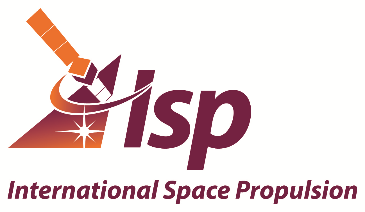-
StatusCompleted
-
Status date2025-09-07
-
Activity Code4B.151
The project has succeeded in a number of ways, potentially disrupting the incumbent hegemony of traditional suppliers to establish a new UK-based supply chain, utilising commercially available space-grade materials and heritage processes to produce pressure vessels that are equal in performance to the current designs, with greatly reduced cost and lead-times, and marked improvement in re-entry demisability.
The final products meet all current space platform performance and structural requirements and can replaced without major impact.
This benefits integrators of all sizes, through the ability to scale readily, and improved supply and availability, enabling them to find the volume they require for their mission, as opposed to accepting nearest catalogue offerings, for lower cost and faster lead-time, thus improving program efficiencies and market share.
Currently there are no providers available in Europe that can deliver these attributes. It is important that the products be non ITAR (US Export), to ensure widest applicability and to reduce mission delays.
With a complete supply gap for which there is a definite requirement (the advent and growth of satellite constellations), this creates a compelling opportunity: however, the development will apply to a broad range of satellite tank sizes, and space applications.
The primary challenge of this project was to identify readily available material solutions that support development of space propulsion tanks within a high reliability mission with ultra-low gas permeation. A new supply chain of heritage suppliers has been established utilising standard precision processes.
Special focus has been given to mounting and fluid system interfaces to ensure space mission requirements are met in full, over all expected environments.
Finally, the application has met the objectives of low-cost to the customer, and demisability in line with ESA Clean Space.
Traditional metallic lined propellant and gas tanks in use on spacecraft systems have inherent restrictions on cost and delivery lead-time, resulting from a limited supply chain, the complex processing of the metallic parts, and the high level of inspection and test required by the industry. By removing the metallic liner and replacing with non-metallic materials, much of the cost and processing time can be minimised. In the field of satellite constellations, this price and lead-time reduction will be highly disruptive, allowing large cost reductions to systems and supply limitations alleviated. This will encourage greater and faster growth in small satellites in new markets and benefit the growth in the industry and social applications.
The use of metallic components in propellant tanks introduces high costs in forming/forging and processing of component parts, joining techniques and precision machining, leading to waste and lengthy timescales. The replacement of these materials with more accessible composite-polymer combinations allows for quicker manufacturing and less wastage, thereby reducing costs and schedule delays, without any loss of strength or performance. With propellant tanks being central to a spacecraft design, a long lead time introduces risks to integration plans and any delay can be costly. By reducing the production lead-time, shortening the assembly process and introducing a new supply chain, major reductions to satellite integration times and associated costs can be achieved in areas closer to where the platforms are to be made.
By removing the dependency on metallic tank parts and traditional production methods, it becomes possible to design tanks to make more efficient use of volumes within satellite envelopes, and maximising available volumes. Non-traditional tank designs may be introduced.
In addition, it will be possible to introduce SMART tanks incorporating electronic sensors into the composite shell, thereby allowing the provision of tanks with pressure, thermal and gauging equipment embedded at delivery, ready for integration.
- Kick off – May 2019;
- Requirements Review – July 2019;
- Test Readiness Review (TRR) – December 2020;
- Test Review Board (TRB) – May 2021;
- Refocus on demisability (CCN-01) – June 2022;
- TRB – November 2021;
- Add Engineering Model (EM) Manufacture and Test (CCN-02) – March 2023;
- Plasma Wind Tunnel TRB – May 2023;
- Pathfinder TRR – December 2023;
- EM production and TRR – July 2024;
- Final Review – May 2025.
- Project completed June 2025;
- Requirements formulated using input from industry;
- Justification and verification plans, PWT test plan, EM production plan, EM test plan issued;
- Material trade-off, evaluation and selection, modelling of EM design;
- PWT evaluation of demisability;
- Production of engineering models;
- EM tests performed and completed between October 2024 and April 2025.




